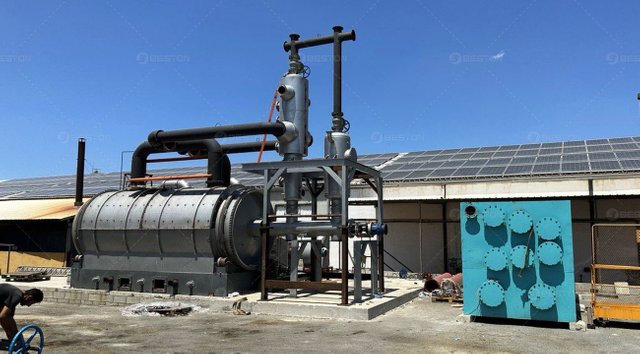Pyrolysis, an innovative and eco-friendly technology, has gained significant attention for its ability to convert various organic materials into valuable products. As we delve into the world of pyrolysis plants, it becomes essential to understand the financial aspect of these ventures. Profit analysis plays a pivotal role in assessing the feasibility and success of such projects, making it imperative for entrepreneurs and investors to dive deep into this subject.
Understanding Pyrolysis Plants
Before we proceed with the profit analysis, let's take a moment to grasp the fundamental aspects of pyrolysis plants. These innovative facilities employ a thermochemical process that involves the decomposition of organic materials under high temperatures and in the absence of oxygen. This unique environment allows the feedstock to break down into valuable products such as biochar, bio-oil, and syngas.
The feedstock used in pyrolysis can vary widely, including biomass, agricultural residues, plastic waste, and rubber tires. Each feedstock type influences the quality and quantity of the final output, emphasizing the importance of selecting suitable materials to optimize profitability. The products obtained from pyrolysis find applications in various industries, from renewable energy generation to soil amendment and specialty chemicals.

Key Factors Affecting Profitability
Several critical factors impact the profitability of a pyrolysis plant, and understanding them is vital for successful operations.
- Initial Investment and Setup Costs:
- Establishing a pyrolysis plant demands significant capital investment.
- The cost includes acquiring land, procuring machinery and equipment, obtaining permits, and setting up the necessary infrastructure.
- While the initial outlay may seem substantial, prudent investment decisions can lead to lucrative returns in the long run.
- Operational Expenses:
- Like any industrial undertaking, pyrolysis plants incur various operational expenses.
- These encompass labor costs, raw material procurement, energy consumption, maintenance, and other overhead expenses.
- Careful monitoring and optimization of these costs contribute to the overall profitability.
- Feedstock Selection and Availability:
- The choice of feedstock significantly impacts the product output and, consequently, the revenue generated.
- Ensuring a consistent supply of high-quality feedstock at a reasonable cost is essential for steady operations and profitability.
- Efficiency and Capacity of the Pyrolysis Plant:
- The efficiency of the pyrolysis process directly influences the yield and quality of the end products.
- Investing in advanced technology and ensuring optimal plant capacity utilization can enhance the overall profitability.
Conducting Profit Analysis
Now that we have an understanding of the key factors involved, let's delve into the process of conducting a comprehensive profit analysis for a pyrolysis plant.- Data Collection and Financial Records:
- To conduct a meaningful profit analysis, it is crucial to gather accurate data related to capital investments, operational expenses, revenues, and other financial transactions.
- Maintaining meticulous records aids in making informed business decisions.
- Calculation of Revenue Streams:
- Revenue in a pyrolysis plant comes from various sources, including the sale of biochar, bio-oil, and syngas.
- Additionally, the generation of renewable energy and potential carbon credits can contribute to the revenue streams.
- A detailed analysis of these income sources is essential for evaluating the overall financial performance.
- Accounting for Variable and Fixed Costs:
- Properly categorizing and analyzing variable costs (e.g., raw materials, labor) and fixed costs (e.g., machinery, administrative expenses) allow for a more accurate calculation of profit margins.
- Identifying areas where costs can be minimized becomes possible through this exercise.
- Analyzing Return on Investment (ROI) and Payback Period:
- ROI serves as a critical metric to assess the success of a pyrolysis plant investment.
- Determining the payback period, i.e., the time taken to recover the initial investment, helps in evaluating the project's financial feasibility.
Optimizing Profitability
To maximize the profitability of a pyrolysis plant, entrepreneurs and investors can explore several strategies and best practices.- Improving Plant Efficiency:
- Enhancing the efficiency of the pyrolysis process can directly impact the quantity and quality of the output.
- Investing in modern technology and process optimization can lead to better product yields and increased revenue.
- Exploring Different Revenue Streams:
- Diversifying revenue streams can safeguard the plant against market fluctuations.
- Exploring niche markets and new applications for pyrolysis products can create additional avenues for generating income.
- Sustainable Practices and Waste Reduction:
- Adopting sustainable practices not only contributes to environmental conservation but can also reduce operating costs.
- Efficient waste management and recycling can minimize raw material expenses and waste disposal costs.
- Market Research and Strategic Partnerships:
- Conducting thorough market research helps in identifying demand trends and potential customers.
- Forming strategic partnerships with industries that require pyrolysis products can lead to stable, long-term contracts and increased profits.